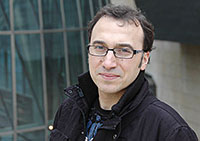|
In 2012, the Royal Statistical Society issued the following question to the members of the British Parliament, probably regarding the International Year of Statistics (2013): «If you toss a coin twice, what is the probability of getting heads twice? ». The correct answer is «a probability of 25%». When you flip a coin twice there are four possible combinations: heads-heads, heads-tails, tails-heads and tails-tails, and only in one of these we get two heads. However, only 40% of parliamentarians guessed it right, 45% of them answered that it was 50%, and even some said that the answer was only 15%. Likewise, in 2008, we read the news «Five European countries recommend their health professionals studying calculus». This article pointed out that up to 45% of hospital mistakes were due to miscalculations of medicine amounts supplied by medical personnel. It also referred to the case of a diabetic child weighing 4 kilos that received a greater dose of insulin than that of an adult of 78 kilos. Different hospitals in the Netherlands, Germany, Belgium, Switzerland and Austria launched compulsory mathematics courses. Is the previous statistical problem really complex? Does calculating the exact doses require specialised training? Clearly, it does not. Are these mistakes, therefore, directly related to poor mathematical training of both politicians and health professionals? Or does society in general suffer from a severe case of innumeracy, i.e., the inability to handle with ease basic maths? In my opinion, the answer is still no. Throughout the years I have been popularising mathematical knowledge, and I have found that a high percentage of errors related to this science are the result not so much of the lack of knowledge but of the mental block that «fear of maths» causes. Most people have acquired all the mathematical knowledge needed for everyday life (handling household finances, taking measures, understanding information from the media, understanding medical and other reports, etc.) in school. When confronted with any issue or problem identified as mathematic, however, people tend to get a mental block, and fear makes them solve the problem with haste, which often results in mistakes (as in the case of the medical doses), or avoidance of the problem (as can occur when reading a news article or a report). Another example. A newspaper, El Diario Montañés, published in 2012 the following news (seen at malaprensa.com) on the Botín Centre: «Over 200 lorries unload two million cubic metres to finish the basement on which the building will be erected». If we are mentally blocked, we shall ignore the numerical information, however, being mathematically active, we will ask ourselves whether «2,000,000 cubic metres» are many or not. To get an idea of the volume this amount of concrete has, we can think that it would fill a 200-metre-long hole, by 100 metres in width and 100 metres deep, which is clearly larger than the hole where the Botín Centre was being built. We can even try to find out the actual volume of concrete. A cement lorry has a capacity of between 8 and 12 m3, therefore, it would be about 2,400 m3 at most. One goal in maths diffusion is to overcome this fear and get people to be more mathematically active. We really have mathematical knowledge; we only need the confidence to use it. NB: Leonhard Euler (1707 – 1783), Swiss mathematician. One of the most important mathematicians, and the most prolific one of all time. |
 Francisco Martín Casalderrey/Revista SUMA Francisco Martín Casalderrey/Revista SUMA
«A high percentage of errors related to this science are the result not so much of the lack of knowledge but of the mental block that “fear of maths” causes» |





